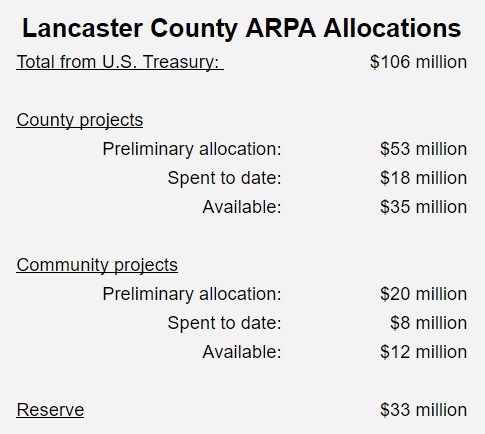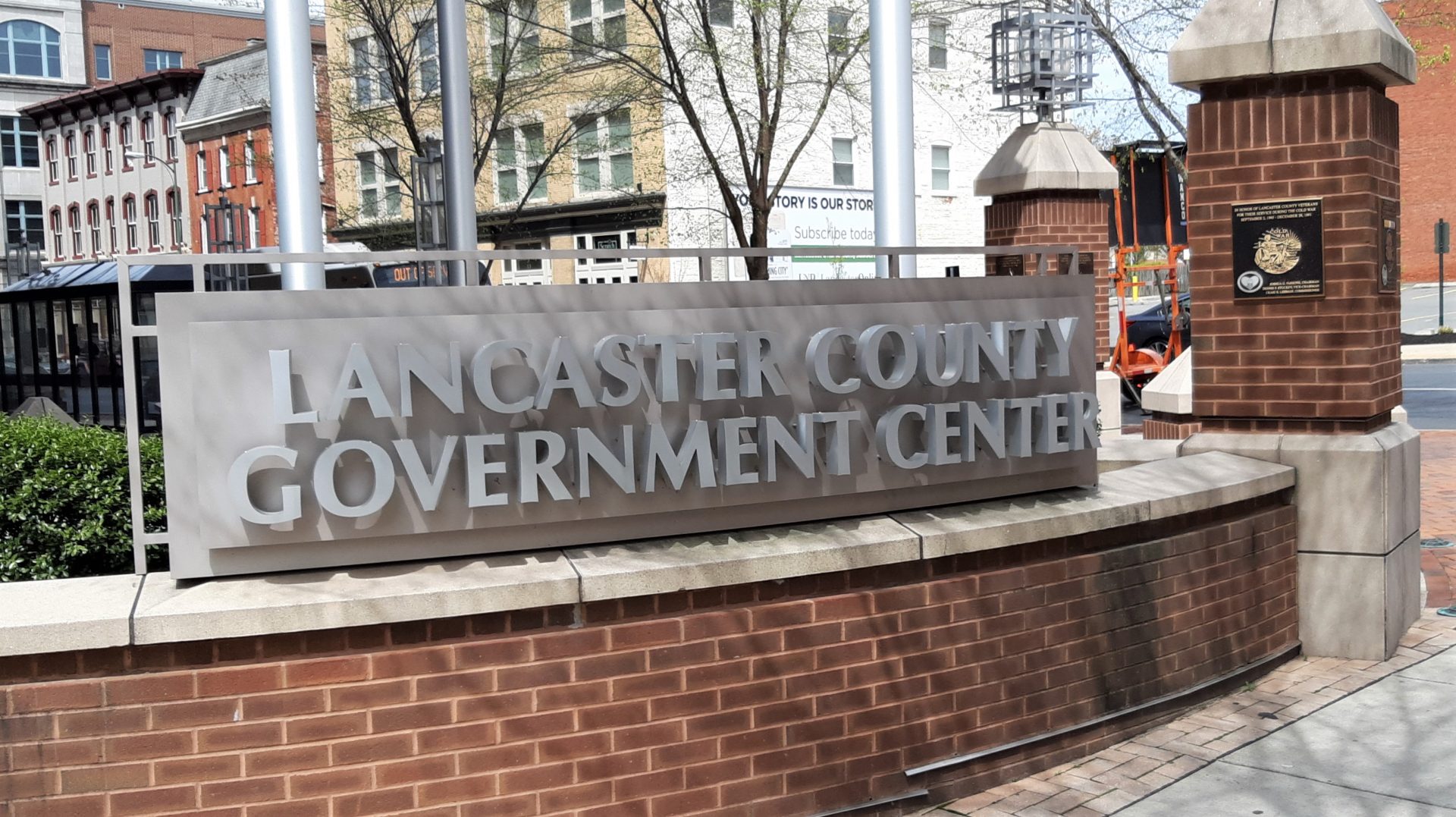It looks as though Lancaster County will eventually put some of its federal pandemic rescue funds toward building up its staff.
All three commissioners agreed in principle Tuesday morning that it would be appropriate to allocate American Rescue Plan Act dollars toward addressing the county’s ongoing staffing shortage. Restoring public-sector staffing to pre-pandemic levels is one of the permitted uses of ARPA under federal guidelines.
Doing so would be beneficial, and would help offset the effects of inflation, commissioners Josh Parsons and Ray D’Agostino said.
The county’s headcount has dropped by about 200 over four years, from 1,847 to 1,640, and turnover remains high, Commissioner John Trescot said. He agreed it makes sense to have ARPA in the mix as the county looks ahead to funding salaries and benefits in its 2023 budget.
The county received a total of $106 million the federal government through ARPA. To date, the commissioners have approved $18 million in allocations for uses within county government. Of that, a little over $1 million has gone to hiring and retention bonuses for prison and sheriff’s department staff, under a section of ARPA allowing enhanced pay for essential workers.
The county has made other efforts to boost retention, including establishing a $15 minimum wage and increasing wages and merit raises. The results of a salary study that is now in process will be factored into next year’s budget, and can be expected to result in further increases, the commissioners said.
In an emotional statement, Deputy Prothonotary David Riger told the commissioners that higher wages are sorely needed. He has always been underpaid, he said, adding that in his experience, low pay is the reason so many county employees jump ship. With inflation raising the cost of living, he said he and his colleagues can’t make ends meet.
“We need to be valued. … We need to get proper raises that we haven’t had in 15 years.”
“We hear you,” D’Agostino said. “We understand where things are.”
All sectors of the economy are struggling with inflation, Parsons said. He and his colleagues agreed they would seek to further enhance salaries, but that they need to balance doing so with the county’s other funding needs and with their responsibility to taxpayers, who themselves are contending with inflation and other challenges.
County ARPA, community ARPA

The salary discussion was part of a larger discussion of ARPA kicked off by D’Agostino, who offered his colleagues an update of a spending overview that he first presented in June. He stressed that it is “just for discussion purposes” and is not a formal or binding framework.
It calls for allocating $53 million in ARPA for the county’s own use and $20 million to community projects. Subtracting the allocations made so far — $18 million and $8 million for county and community projects, respectively — leaves $35 million for the county and $12 million for third-party applications.
The final $33 million would be held in reserve for now. As with all of the funds, the commissioners could spend it as they see fit, on internal initiatives or third-party ones, as long as they adhere to federal ARPA guidelines. The deadline is the end of 2024.
The commissioners have said all along that county government’s own needs are their first priority, noting that they distributed the majority of the funding from the CARES Act — ARPA’s predecessor — to the community.
Trescot was dismissive of D’Agostino’s framework, saying he didn’t see a rationale behind the $53 million/$20 million split. Parsons restated the ARPA priorities he’s been following: The county’s needs first, then high-impact countywide projects, then smaller projects with high local impact.
The first round of community ARPA requests closed on Aug. 31. The commissioners have been reviewing applications since June, but still have dozens in the pipeline: In all, nearly 100 proposals were submitted, with a total dollar value of $73.5 million.
Applications are evaluated according to county guidelines released in June. So far, the commissioners have declined to approve anything that smacks of maintenance. They’ve also turned down projects in which, in their view, the connection to ARPA priorities was tenuous, including a financial development center proposed by Community First Fund and a “Sky Bridge” exhibit proposed by Lancaster Science Factory.
D’Agostino said the county still has every intention of conducting a second round of ARPA applications, but he and Parsons indicated that it’s not a certainty: It depends on how the first round and the county’s needs play out.
It also depends on whether Congress changes the law to allow counties like Lancaster to devote a portion of ARPA funds to general infrastructure. Parsons has said before that the county would be interested in using ARPA for its prison project if that happens; that remains the case, he confirmed Tuesday.
The potential for changes in eligibility like that is part of the reason it makes sense for the county to be as flexible as it can and keep some ARPA in reserve, D’Agostino said.






